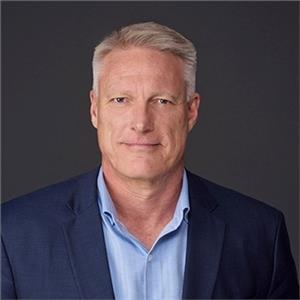How to best support your people in the new world of work

With the rising cost of living and a 2023 Singapore Budget largely focused on building capabilities and seizing new opportunities, organisations should turn their focus inward to address existing business challenges and bolster productivity. Fostering internal growth opportunities, supporting middle managers, and ensuring that workers of all generations feel a sense of belonging within the workplace are just some of the ways forward-thinking organisations in Singapore can tap into the potential of their people and secure a future of innovation and resilience.
Here are some tips for how to get started:
Career mobility and resilience
According to Ceridian’s 2023 Pulse of Talent survey, 80% of Singapore workers are a flight risk. But when these respondents were asked if better internal career opportunities would make them consider staying with their current employer, 92% said yes.
When asked about internal career opportunities, more than half of Singapore workers said they would like to contribute skills to new projects from within their current role (53%) or move into a new role in a different team or department (52%).
Despite this interest, less than half (48%) said they saw a clear career path with their employer, and only 1-in-10 felt they had a high degree of control over their career path.

“By prioritising career mobility, attending to the needs of their workforce, and removing internal obstacles, organisations can cultivate a culture that promotes employee well-being and equip their workforce to thrive in the face of future disruptions.” – Rob Squires, VP, Regional Head of Asia and Japan, Ceridian
To effectively address these concerns, companies should implement skills training and development programmes to help employees build resilience and prepare for future career opportunities. Furthermore, mentoring and coaching programmes, job rotations, and cross-functional training opportunities can also provide exposure to different parts of the organisation, facilitating the acquisition of diverse skills that promote career mobility and retention.
Stuck in the middle
Employee career experiences and retention are heavily influenced by managers. But middle managers face unique challenges in the post-pandemic workplace. Positioned between senior leaders and individual contributors, middle managers serve as a crucial link, facilitating communication both up and down within their organisation. This also means that much of their day is spent in meetings.
Despite their vital role, 69% of middle managers globally felt stuck in their roles last year, while more than a third (34%) do not feel fulfilled in their jobs.
One of the ways employers can better support middle managers and improve their efficiency is with a human capital management (HCM) system built as a single solution. For organisations with existing technology in place, evaluating its effectiveness in meeting managers’ needs is essential. If outdated or separate systems are in use for various aspects of workforce management, middle managers may be losing valuable time trying to gather, analyse, and translate people data into meaningful insights.
Likewise, the administrative strain from switching between disparate systems adds more work to managers’ already full plates, taking them away from higher-value work such as coaching and mentoring. The right HCM technology can help reduce these challenges and free up time for middle managers to focus on the work they enjoy.
Working longer beyond retirement
The aging workforce is another trend that presents both challenges and opportunities for organisations. With more people working beyond their retirement years, employers must adapt to accommodate the changing needs of their workforce.
In Ceridian’s 2023 Pulse of Talent survey, we found that ageism in the workplace can start to occur as early as age 45, and that as a worker’s age increases, their chances for workplace development opportunities decrease.
To effectively address changing employee needs and identify potential blind spots in HR practices and policies, organisations must adopt a proactive approach to understanding their workforce. Annual employee engagement surveys or diversity, equality, and inclusion (DEI) questionnaires are valuable tools that allow employers to better understand their employees’ needs while helping identify issues that may be hiding below the surface. This information can help businesses foster a culture of inclusivity and build a resilient workforce that is poised for long-term success.
Final thoughts
Together, these emerging trends highlight the need for organisations to embrace modern HCM technology, such as Dayforce offered by Ceridian, to transform HR practices and policies and meet the needs of today’s workforce. By prioritising career mobility, attending to the needs of their workforce, and removing internal obstacles, organisations can cultivate a culture that promotes employee well-being and equip their workforce to thrive in the face of future disruptions.
About the Author: Rob Squires is VP, Regional Head of Asia and Japan, Ceridian. Join him at HR Tech Festival Asia 2023 on May 11 at 9.35 am (SGT), where he will discuss how organisations can embrace career flexibility to move faster, work harder, and build resilience.



